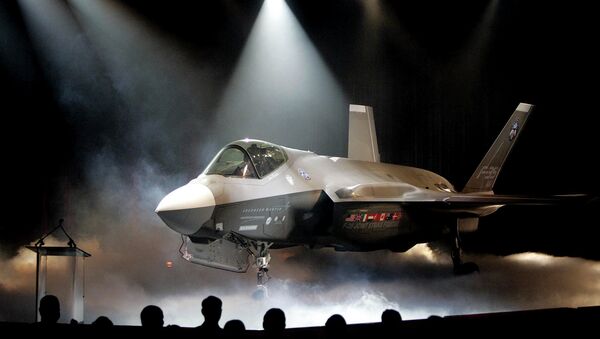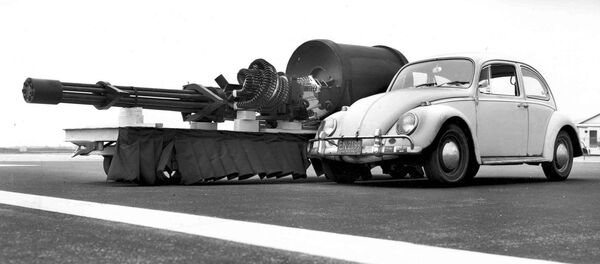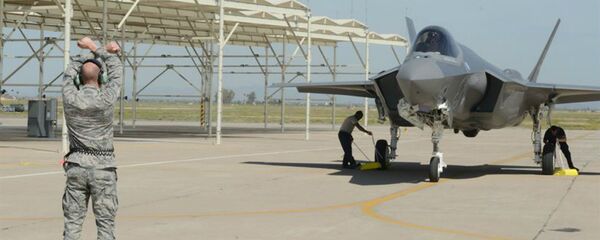With a production price tag judged variously to be between $115 and $198 million per plane, and a total projected program cost at nearly $1.5 trillion, each plane that crashes is an equivalent financial loss to five F-16 Fighting Falcon jets; or, in greater social terms, a 100-bed hospital, like the $150 million facility being built at Augusta University, according to the Atlanta Business Chronicle.
The F-35 program is no stranger to procurement difficulties or parts quality, either. Among the problems encountered by the F-35 so far — the B version of which only flew its first combat mission the day before the South Carolina crash — have been the LEDs in their helmet displays, tires that wear out too quickly, refueling probes breaking off in mid-flight, the plane's life support system not providing adequate oxygen to pilots during flights, and being unable to fly in certain kinds of weather. Many more such problems exist. Each has impaired the ability of the plane to operate effectively and further inflated the cost per plane, as problems have to be identified and fixes found and implemented before the jets are up to "factory spec" — or what factory spec is supposed to be from the Pentagon's point of view.
Pierre Sprey, a special assistant to the Secretary of Defense and a former defense analyst who is considered to be one of the fathers of the F-16 and A-10 fighter jets, and one of the country's foremost critics of the F-35, told Radio Sputnik's Loud & Clear Thursday that the reason for both the high cost and the low quality of the plane's parts is the way the procurement system operates. Built into this system, he says, are incentives for cost overruns and corruption by military brass who go on to lucrative defense contracts after they retire.
Noting how contractors working on Pentagon projects have placed their subcontracts in nearly every single congressional district in the country, Sprey told hosts John Kiriakou and Brian Becker that this was "a way of influencing the Congress to vote in ways that are not in the interests of national defense and not in the interests of the taxpayer."
Sprey noted that those kinds of decisions — for example, to build a certain component in Montana instead of Georgia — aren't simply changes in location; spreading around the F-35 pie so most of Congress gets a piece carries a "penalty [that] is very, very high." He noted that such operations have to outsource for parts more, which "makes control of the production very, very difficult." Further, the best contractors might not be available in those districts, meaning "second-rate contractors" pick up the tab and likely don't build the part to specifications. "You can't fire him, because you need that senator, right? So effectively you've lost control over your production process because you've let politics interfere in the selection of the sources for the parts you need."
Sprey noted that scheduling is plagued by the same problems for the same reasons.
"So you wind up with a bunch of major quality control problems that of course affect the safety and the maintenance of the airplane," the former defense analyst said.
"This was so bad, in a recent example, on the F-22, also built by Lockheed like the F-35, they actually had something called a shim line, where when they got bad parts in, instead of sending them back to the contractor to get them built to correct specs — which would take a lot of time, and they were falling behind on schedule — they would actually have a special assembly line where they would take these somewhat out-of-spec parts, and they would kind of ‘shim' them to fit. In other words, we were going back to the kind of primitive, hand-built production that people were doing before mass production was invented in the 19th century!"
Sprey described how this can create real problems when the part breaks later on and "the 19-year-old mechanic on the flight line" has to order a new part that isn't quite the same as the one shimmed onto the plane during production. "Now he has to apply the kind of expertise and years of experience it takes to shim the part into place — you can't expect him to be able to do that."
As to the question of battlefield efficacy, the former special assistant to the secretary of defense said that "the do-everything, ‘Swiss knife' of airplanes" is "like a screwdriver and a saw and a hammer all combined into one, and obviously it doesn't do any of those three very well. Multi-mission airplanes never do.
"This airplane was supposed to do close [air] support," he said, noting it is "hopelessly inferior, incurably inferior to the A-10," the plane it was supposed to supplant, "at actually supporting troops, getting in close on very dangerous, close-in firefights and not killing our own people. That's the problem: when that airplane tries to get in close — which it has to, to really distinguish friend from foe — it will get shot to pieces. So it can't do it, and that means it's going to be trying to distinguish friend from foe over imperfect video links and stuff like that from 15 or 20,000 feet, and Americans will die."
Multirole jets have already been demonstrating these issues in Iraq and Afghanistan, "mostly in the case of high-speed, high-altitude bombers and fighters. The A-10 has far less of that problem — both because it can get in close and because the pilots are 100 percent for close support. Remember, a multi-mission airplane carries a multi-mission pilot, so he's gotta split his time between close support and deep-strike bombing and air-to-air, and he's not going to be that good at any of them, just like the airplane isn't good at any of them."
The plane suffers in its deep strike bombing role "because of its stealth," he said, because "right now the F-35s that are flying can carry two bombs" due to the necessity of storing the weapons inside its internal bomb bay to maintain stealth capabilities — "a ludicrous payload."







